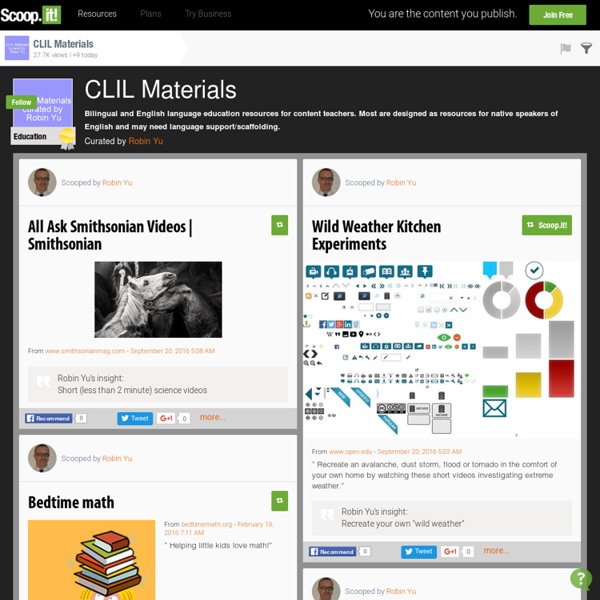



The Next Generation of LifelongLearningTeachers: CLIL lesson - History This is a CLIL activity I made up on my own for one of my classes. It's simple, funny, and easy to customize for different subjects (I will post a Geography version later on). It turned out to be motivating and successful, so I would rank it second in my CLIL experience, just after Dante's CLIL. Note: this lesson-plan fits any situation when you want to revise a range of topics you've already studied with your pupils. In my opinion, it won't work for introducing a new subject. As for us, we had been studying the fall of the Roman Empire, dealing with different populations: the Romans, the Huns, the Byzantines and the Lombards (Langobards). about 20 students - 12/13 years old subjects: History/Languages Pupils working in teams (4 teams, since we had studied 4 different populations) About 2 hours needed Instructions given in English - pupils can answer and discuss, when needed, both in English and in mother tongue. Materials: "I am a nomad, I live on raids, and I spend most of my life on horses.
CLIL Resources / Recursos AICLE English: Portals and Encyclopedias / Maths, Physics, Chemistry, Technology, etc / Natural Science, Biology, etc / Physical Education / Geography, History, Literature, Art, Philosophy, etc. Classroom language / lenguaje para el aula Classroom Language- stages in the lesson - pdf Classroom English PhrasesEAP Speaking - Language Les mots de la classe Videos, Podcasts, images, animaciones, etc. Google Videos Videopedia YouTube Edu Vimeo Teacher Tube Tes Teach The Naked Scientists Khan Academy Encyclopeadia Britannica Educational podcasts Visual dictionaryonline Wikimedia Commons Free Clip Art by Phillip Martin Shahi - A visual dictionary | pictures from Flicker, Google and Yahoo. Free Technology for teachers Some Tools Flash Saver - capture flash files, download flash files by a simple click Download VLC Media Player (to play any kind of audio or video)Brenden's Resource GeneratorAdd Subtitles to your Videos - Overstream / dotsubCreate Maps English Learning Resource Exchange for schools Tes.co.uk Wikipedia
KEY PRINCIPLES - CLIL principles CLIL principals consist of three main blocks: - the 4Cs: Content, Communication, Culture and Cognition - Bloom’s taxonomy - Cummin’s Quadrant In 1956, Benjamin Bloom headed a group of educational psychologists who developed a classification of levels of intellectual behaviour important in learning. During the 1990s a new group of cognitive psychologists, lead by Lorin Anderson (a former student of Bloom’s), updated the taxonomy reflecting relevance to 21st century work. Creating Evaluating Analyzing Applying Understanding Remembering Remembering, understanding and applying are LOTS. When teaching we have to combine HOTS and LOTS activities in order not to tire our students but be careful! My advice is to start from the bottom and climb up the levels step by step but keep going backwards by climbing. Cummins’ quadrant is a useful tool for designing content lessons. Cummins advices us to start with a task that is cognitively simple and context-embedded. THE 4 Cs: CLIL principles in action
English Teaching Topics CLIL4teachers / CLIL4teachers Front Page